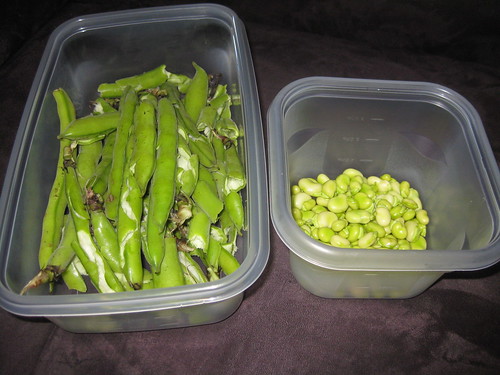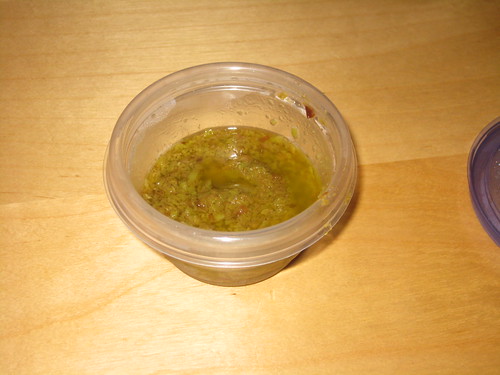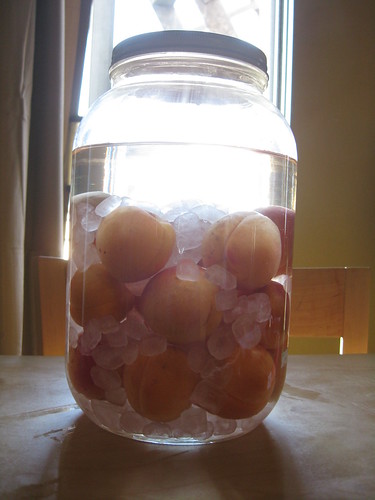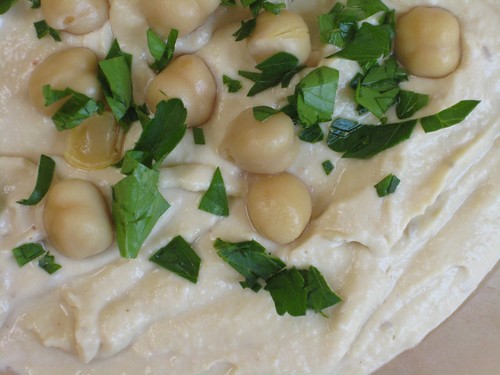A tomato adventure!
This weekend my CSA, Eatwell Farm, had a tomato sauce party. They invited members over to the farm (in Dixon, CA) to make and can tomato sauce from tomatoes that were too ripe to send down the road to SF, and to camp out. Mackenzie and I had been to the farm in May for Strawberry picking, but we had never spent the night before (this was the second campout of the year, the first, a garlic party, was on her birthday weekend), so we didn’t know exactly what to expect. Still, it seemed like fun, so I signed us up for it.
Armed with pots, pans, knives, and a borrowed propane stove, we drove out to the farm, arriving fashionably late. Some people, who got there when the event began at 11am, were nearly finished for the day by the time we showed up at 2PM! No matter, it was a race and not a sprint for us, as we were spending the night. We cooked up an initial sauce, which ended up only filling one of my jars, but when that couldn’t fill up all of the canning jars I brought, we used the leftover to create the starting point of a second sauce. We ended up having to make a third, smaller batch, to eat with dinner that night. It was certainly a learning experience as I only ever made sauce from fresh tomatoes once before, when I roasted the heck out of some romas and then ground them in a Moulinex (note to self, bring that next time!).
After we finished up the sauce and got in line for canning (they had several pressure canners set up, but as some people made entire flats of mason jars of sauce, there was quite a wait to actually get on the stove, we ate some pasta and sauce for dinner. Bread would have been nice, as you use the same ingredients to make buschetta as tomato sauce, and there was bountiful garlic, tomatoes and basil. And after dinner we were given a tour of their amazing earthen roofed farmhouse, which is under construction. We even got to climb to the top of the roof!
After the tour, when we were packing the cooking utensils back in the car, a woman came up to us and asked if we lived on Lily St, which happens to be the street I live on. I said I did, and looked at her quizzically, and she told us that she too lives on Lily. She had noticed us packing the car this morning (and I guess I sort of noticed them too, but didn’t make a big memory of it) and Mackenzie’s neon sneakers keyed her in to the fact that we were the same people. So strangely, I drove 100 miles and managed to meet some neighbors! And even crazier, my jars and theirs were combined into one batch for the pressure canner through somewhat random chance!
After a remarkably good nights sleep for lying on the ground, we were treated to a breakfast of the best flour tortillas I’ve ever eaten, and the farm’s delicious, FRESH, eggs from their pastured chickens. These eggs are super delicious, and I highly recommend them (they have them at Rainbow sometimes, for the SF locals). When breakfast was over we went on a farm tour, and were given free reign to pick strawberries, eggplants and zucchini blossom from some over abundant (or soon to be shredded for chicken feed) fields. We snagged some strawberries and eggplants, and head out to Davis to see Mackenzie’s Sister and her family for lunch.
All in all it was a pretty great adventure, and I didn’t even mention the kitchen cart trial that was the reason that we showed up late until the end.






